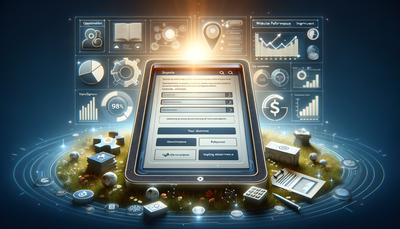Digital Cards for Education: Transforming Student and Faculty Connections
Digital cards are revolutionizing the way educational institutions connect students, faculty, and staff. These versatile tools offer a dynamic platform for sharing course information, office hours, and academic resources, streamlining communication and enhancing the overall educational experience. By leveraging digital cards, schools and universities can create a more efficient and engaging environment for learning and collaboration. This article explores the transformative potential of digital cards in education, highlighting their benefits, implementation strategies, and the positive impact they can have on academic communities.Table of Contents:

The Rise of Digital Cards in Education
As technology continues to reshape the educational landscape, digital cards have emerged as a powerful tool for fostering connections and streamlining information sharing. These interactive, digital representations of traditional business cards or course syllabi offer a wealth of benefits for students, faculty, and staff alike. By consolidating essential information into a single, easily accessible format, digital cards are transforming the way educational institutions operate and communicate.From providing quick access to course materials to facilitating seamless communication between students and professors, digital cards are proving to be an invaluable asset in the modern academic environment. As more schools and universities adopt this innovative technology, the potential for enhanced collaboration and improved learning outcomes continues to grow.
Do you need a website? Want to build a website but don't know where to start? Our website builder is the perfect solution. Easy to use, and with the ability to customize to fit your business needs, you can have a professional website in no time.
Enhancing Student-Faculty Communication
One of the primary benefits of digital cards in education is their ability to improve communication between students and faculty members. By integrating contact information, office hours, and preferred communication channels into a single digital card, professors can make themselves more accessible to their students. This increased accessibility can lead to more frequent and meaningful interactions, fostering a stronger sense of connection and support within the academic community.Digital cards can also include links to virtual meeting rooms or scheduling tools, making it easier for students to book appointments or attend online office hours. This seamless integration of communication tools can help break down barriers between students and faculty, encouraging more open dialogue and collaboration throughout the academic year.
Streamlining Course Information and Resources
Digital cards offer a centralized platform for sharing course information and academic resources, making it easier for students to access the materials they need to succeed. By including links to syllabi, reading lists, and online textbooks, digital cards can serve as a one-stop shop for all course-related information. This consolidation of resources not only saves time for students but also helps ensure that they have access to the most up-to-date materials throughout the semester.Faculty members can also use digital cards to share additional resources, such as supplementary readings, video lectures, or practice exercises. By providing easy access to these materials, digital cards can help students engage more deeply with course content and take a more active role in their learning journey.
Building a website with SITE123 is easy
Facilitating Campus-Wide Connections
Beyond improving student-faculty communication, digital cards can also enhance connections across the entire campus community. By creating digital cards for various departments, student organizations, and administrative offices, educational institutions can provide a comprehensive directory of campus resources. This centralized information hub can help students navigate university life more easily, from accessing career services to joining extracurricular activities.Staff members can also benefit from digital cards, using them to share important information about campus events, deadlines, and services. This streamlined approach to information sharing can help create a more cohesive and informed campus community, fostering a sense of belonging and engagement among all members of the institution.
Implementing Digital Cards in Educational Settings
To successfully implement digital cards in an educational setting, institutions should consider a phased approach that allows for gradual adoption and refinement of the technology. Begin by piloting digital cards with a select group of faculty members or departments, gathering feedback and identifying best practices. This initial phase can help address any potential challenges and ensure a smooth rollout across the entire institution.Provide comprehensive training and support for faculty, staff, and students to ensure that everyone can effectively use and benefit from digital cards. Consider creating tutorials, hosting workshops, and offering ongoing technical assistance to facilitate widespread adoption. Additionally, encourage feedback and suggestions from all users to continually improve the digital card system and address the evolving needs of the academic community.
The Future of Digital Cards in Education
As technology continues to advance, the potential applications for digital cards in education are likely to expand. Future developments may include integration with learning management systems, personalized content recommendations based on student interests and performance, and enhanced analytics to track student engagement and progress. These innovations could further transform the educational landscape, creating more personalized and effective learning experiences for students at all levels.By embracing digital cards and staying at the forefront of educational technology, institutions can position themselves as leaders in innovative teaching and learning practices. This commitment to leveraging cutting-edge tools can help attract and retain talented students and faculty, ultimately enhancing the overall quality and reputation of the institution.





